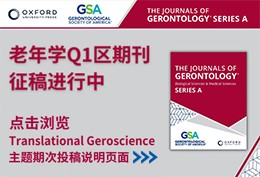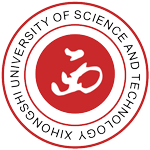样式: 排序: IF: - GO 导出 标记为已读
-
Targeted inhibition of Gq signaling induces airway relaxation in mouse models of asthma Sci. Transl. Med. (IF 14.6) Pub Date : 2017-09-13 Michaela Matthey, Richard Roberts, Alexander Seidinger, Annika Simon, Ralf Schröder, Markus Kuschak, Suvi Annala, Gabriele M. König, Christa E. Müller, Ian P. Hall, Evi Kostenis, Bernd K. Fleischmann, Daniela Wenzel
Obstructive lung diseases are common causes of disability and death worldwide. A hallmark feature is aberrant activation of Gq protein–dependent signaling cascades. Currently, drugs targeting single G protein (heterotrimeric guanine nucleotide–binding protein)–coupled receptors (GPCRs) are used to reduce airway tone. However, therapeutic efficacy is often limited, because various GPCRs contribute to
-
Endothelial APLNR regulates tissue fatty acid uptake and is essential for apelin’s glucose-lowering effects Sci. Transl. Med. (IF 14.6) Pub Date : 2017-09-13 Cheol Hwangbo, Jingxia Wu, Irinna Papangeli, Takaomi Adachi, Bikram Sharma, Saejeong Park, Lina Zhao, Hyekyung Ju, Gwang-woong Go, Guoliang Cui, Mohammed Inayathullah, Judith K. Job, Jayakumar Rajadas, Stephanie L. Kwei, Ming O. Li, Alan R. Morrison, Thomas Quertermous, Arya Mani, Kristy Red-Horse, Hyung J. Chun
Treatment of type 2 diabetes mellitus continues to pose an important clinical challenge, with most existing therapies lacking demonstrable ability to improve cardiovascular outcomes. The atheroprotective peptide apelin (APLN) enhances glucose utilization and improves insulin sensitivity. However, the mechanism of these effects remains poorly defined. We demonstrate that the expression of APLNR (APJ/AGTRL1)
-
Tumor lymphangiogenesis promotes T cell infiltration and potentiates immunotherapy in melanoma Sci. Transl. Med. (IF 14.6) Pub Date : 2017-09-13 Manuel Fankhauser, Maria A. S. Broggi, Lambert Potin, Natacha Bordry, Laura Jeanbart, Amanda W. Lund, Elodie Da Costa, Sylvie Hauert, Marcela Rincon-Restrepo, Christopher Tremblay, Elena Cabello, Krisztian Homicsko, Olivier Michielin, Douglas Hanahan, Daniel E. Speiser, Melody A. Swartz
In melanoma, vascular endothelial growth factor–C (VEGF-C) expression and consequent lymphangiogenesis correlate with metastasis and poor prognosis. VEGF-C also promotes tumor immunosuppression, suggesting that lymphangiogenesis inhibitors may be clinically useful in combination with immunotherapy. We addressed this concept in mouse melanoma models with VEGF receptor–3 (VEGFR-3)–blocking antibodies
-
Do not cross to avoid an exacerbation Sci. Transl. Med. (IF 14.6) Pub Date : 2017-09-13 Stephanie A. Christenson
Reducing IgE with Omalizumab in children with asthma improves the plasmacytoid dendritic cell interferon response to virus in vitro.
-
In the mood for food Sci. Transl. Med. (IF 14.6) Pub Date : 2017-09-13 Kafui Dzirasa
A neuronal subpopulation in the central amygdala promotes food consumption.
-
Problems with mast transit Sci. Transl. Med. (IF 14.6) Pub Date : 2017-09-13 Benjamin Levi
Mast cell inhibition prevents heterotopic ossification in a model of fibrodysplasia ossificans progressiva.
-
NLRP3, keep it down so we can hear Sci. Transl. Med. (IF 14.6) Pub Date : 2017-09-13 Jennifer A. Philips
A gain-of-function mutation in NLRP3 is associated with cochlear inflammation and hearing loss.
-
Peptide probes detect misfolded transthyretin oligomers in plasma of hereditary amyloidosis patients Sci. Transl. Med. (IF 14.6) Pub Date : 2017-09-13 Joseph D. Schonhoft, Cecilia Monteiro, Lars Plate, Yvonne S. Eisele, John M. Kelly, Daniel Boland, Christopher G. Parker, Benjamin F. Cravatt, Sergio Teruya, Stephen Helmke, Mathew Maurer, John Berk, Yoshiki Sekijima, Marta Novais, Teresa Coelho, Evan T. Powers, Jeffery W. Kelly
Increasing evidence supports the hypothesis that soluble misfolded protein assemblies contribute to the degeneration of postmitotic tissue in amyloid diseases. However, there is a dearth of reliable nonantibody-based probes for selectively detecting oligomeric aggregate structures circulating in plasma or deposited in tissues, making it difficult to scrutinize this hypothesis in patients. Hence, understanding
-
Fat chance for creatine deficiency Sci. Transl. Med. (IF 14.6) Pub Date : 2017-09-13 Catherine A. Charneski
Creatine metabolism in adipose tissue is necessary to burn off extra dietary calories and helps prevent obesity.
-
Broadly neutralizing antibodies targeting the HIV-1 envelope V2 apex confer protection against a clade C SHIV challenge Sci. Transl. Med. (IF 14.6) Pub Date : 2017-09-06 Boris Julg, Lawrence J. Tartaglia, Brandon F. Keele, Kshitij Wagh, Amarendra Pegu, Devin Sok, Peter Abbink, Stephen D. Schmidt, Keyun Wang, Xuejun Chen, M. Gordon Joyce, Ivelin S. Georgiev, Misook Choe, Peter D. Kwong, Nicole A. Doria-Rose, Khoa Le, Mark K. Louder, Robert T. Bailer, Penny L. Moore, Bette Korber, Michael S. Seaman, Salim S. Abdool Karim, Lynn Morris, Richard A. Koup, John R. Mascola
Neutralizing antibodies to the V2 apex antigenic region of the HIV-1 envelope (Env) trimer are among the most prevalent cross-reactive antibodies elicited by natural infection. Two recently described V2-specific antibodies, PGDM1400 and CAP256-VRC26.25, have demonstrated exquisite potency and neutralization breadth against HIV-1. However, little data exist on the protective efficacy of V2-specific
-
Nondestructive tissue analysis for ex vivo and in vivo cancer diagnosis using a handheld mass spectrometry system Sci. Transl. Med. (IF 14.6) Pub Date : 2017-09-06 Jialing Zhang, John Rector, John Q. Lin, Jonathan H. Young, Marta Sans, Nitesh Katta, Noah Giese, Wendong Yu, Chandandeep Nagi, James Suliburk, Jinsong Liu, Alena Bensussan, Rachel J. DeHoog, Kyana Y. Garza, Benjamin Ludolph, Anna G. Sorace, Anum Syed, Aydin Zahedivash, Thomas E. Milner, Livia S. Eberlin
Conventional methods for histopathologic tissue diagnosis are labor- and time-intensive and can delay decision-making during diagnostic and therapeutic procedures. We report the development of an automated and biocompatible handheld mass spectrometry device for rapid and nondestructive diagnosis of human cancer tissues. The device, named MasSpec Pen, enables controlled and automated delivery of a discrete
-
Synthetic oligosaccharides can replace animal-sourced low–molecular weight heparins Sci. Transl. Med. (IF 14.6) Pub Date : 2017-09-06 Yongmei Xu, Kasemsiri Chandarajoti, Xing Zhang, Vijayakanth Pagadala, Wenfang Dou, Debra Moorman Hoppensteadt, Erica M. Sparkenbaugh, Brian Cooley, Sharon Daily, Nigel S. Key, Diana Severynse-Stevens, Jawed Fareed, Robert J. Linhardt, Rafal Pawlinski, Jian Liu
Low–molecular weight heparin (LMWH) is used clinically to treat clotting disorders. As an animal-sourced product, LMWH is a highly heterogeneous mixture, and its anticoagulant activity is not fully reversible by protamine. Furthermore, the reliability of the LMWH supply chain is a concern for regulatory agencies. We demonstrate the synthesis of heparin dodecasaccharides (12-mers) at the gram scale
-
Queuing up for resistance testing Sci. Transl. Med. (IF 14.6) Pub Date : 2017-09-06 Kathryn Dupnik
Antibiotic resistance in Escherichia coli can be assessed by real-time imaging of bacterial replication in a microfluidics system.
-
A tale of two amyloids Sci. Transl. Med. (IF 14.6) Pub Date : 2017-09-06 Jill K. Morris
Plasma β-amyloid drives peripheral insulin resistance, which precedes an increase in cerebral neuropathology in a novel mouse model that combines Alzheimer’s and diabetes pathologies.
-
Single-cell nuclei rise from the dead Sci. Transl. Med. (IF 14.6) Pub Date : 2017-09-06 Kevin R. King
High throughput, single-cell transcriptomic profiling can rapidly profile frozen mouse and human tissues.
-
ILCregs: The new kid in class Sci. Transl. Med. (IF 14.6) Pub Date : 2017-09-06 Tiffany C. Scharschmidt
ILCregs are a population of innate lymphoid cells that control innate intestinal inflammation through IL-10.
-
New class of precision antimicrobials redefines role of Clostridium difficile S-layer in virulence and viability Sci. Transl. Med. (IF 14.6) Pub Date : 2017-09-06 Joseph A. Kirk, Dana Gebhart, Anthony M. Buckley, Stephen Lok, Dean Scholl, Gillian R. Douce, Gregory R. Govoni, Robert P. Fagan
There is a medical need for antibacterial agents that do not damage the resident gut microbiota or promote the spread of antibiotic resistance. We recently described a prototypic precision bactericidal agent, Av-CD291.2, which selectively kills specific Clostridium difficile strains and prevents them from colonizing mice. We have since selected two Av-CD291.2–resistant mutants that have a surface (S)-layer–null
-
Rare autosomal trisomies, revealed by maternal plasma DNA sequencing, suggest increased risk of feto-placental disease Sci. Transl. Med. (IF 14.6) Pub Date : 2017-08-30 Mark D. Pertile, Meredith Halks-Miller, Nicola Flowers, Catalin Barbacioru, Sarah L. Kinnings, Darcy Vavrek, William K. Seltzer, Diana W. Bianchi
Whole-genome sequencing (WGS) of maternal plasma cell-free DNA (cfDNA) can potentially evaluate all 24 chromosomes to identify abnormalities of the placenta, fetus, or pregnant woman. Current bioinformatics algorithms typically only report on chromosomes 21, 18, 13, X, and Y; sequencing results from other chromosomes may be masked. We hypothesized that by systematically analyzing WGS data from all
-
Rewriting the genome in human embryos Sci. Transl. Med. (IF 14.6) Pub Date : 2017-08-30 Leah C. Byrne
Researchers have edited the genome of human embryos to correct dominant myocardial disease.
-
Nanotransfection brings progress that’s more than skin-deep Sci. Transl. Med. (IF 14.6) Pub Date : 2017-08-30 Miles A. Miller
Arrayed nanochannels efficiently transfect skin for local in vivo genetic reprogramming.
-
Deterring zoster Sci. Transl. Med. (IF 14.6) Pub Date : 2017-08-30 Jonathan J. Miner
Germline mutations in RNA polymerase III cause susceptibility to life-threatening varicella zoster infection.
-
More excitation for Rett syndrome Sci. Transl. Med. (IF 14.6) Pub Date : 2017-08-30 Gaia Novarino
D-cycloserine ameliorates breathing abnormalities and survival rate in a mouse model of Rett syndrome.
-
Increased adaptive immune responses and proper feedback regulation protect against clinical dengue Sci. Transl. Med. (IF 14.6) Pub Date : 2017-08-30 Etienne Simon-Lorière, Veasna Duong, Ahmed Tawfik, Sivlin Ung, Sowath Ly, Isabelle Casadémont, Matthieu Prot, Noémie Courtejoie, Kevin Bleakley, Philippe Buchy, Arnaud Tarantola, Philippe Dussart, Tineke Cantaert, Anavaj Sakuntabhai
Clinical symptoms of dengue virus (DENV) infection, the most prevalent arthropod-borne viral disease, range from classical mild dengue fever to severe, life-threatening dengue shock syndrome. However, most DENV infections cause few or no symptoms. Asymptomatic DENV-infected patients provide a unique opportunity to decipher the host immune responses leading to virus elimination without negative impact
-
Inflammatory monocytes expressing tissue factor drive SIV and HIV coagulopathy Sci. Transl. Med. (IF 14.6) Pub Date : 2017-08-30 Melissa E. Schechter, Bruno B. Andrade, Tianyu He, George Haret Richter, Kevin W. Tosh, Benjamin B. Policicchio, Amrit Singh, Kevin D. Raehtz, Virginia Sheikh, Dongying Ma, Egidio Brocca-Cofano, Cristian Apetrei, Russel Tracy, Ruy M. Ribeiro, Alan Sher, Ivo M. B. Francischetti, Ivona Pandrea, Irini Sereti
In HIV infection, persistent inflammation despite effective antiretroviral therapy is linked to increased risk of noninfectious chronic complications such as cardiovascular and thromboembolic disease. A better understanding of inflammatory and coagulation pathways in HIV infection is needed to optimize clinical care. Markers of monocyte activation and coagulation independently predict morbidity and
-
Targeting the vascular and perivascular niches as a regenerative therapy for lung and liver fibrosis Sci. Transl. Med. (IF 14.6) Pub Date : 2017-08-30 Zhongwei Cao, Tinghong Ye, Yue Sun, Gaili Ji, Koji Shido, Yutian Chen, Lin Luo, Feifei Na, Xiaoyan Li, Zhen Huang, Jane L. Ko, Vivek Mittal, Lina Qiao, Chong Chen, Fernando J. Martinez, Shahin Rafii, Bi-Sen Ding
The regenerative capacity of lung and liver is sometimes impaired by chronic or overwhelming injury. Orthotopic transplantation of parenchymal stem cells to damaged organs might reinstate their self-repair ability. However, parenchymal cell engraftment is frequently hampered by the microenvironment in diseased recipient organs. We show that targeting both the vascular niche and perivascular fibroblasts
-
Subcutaneous drug delivery: An evolving enterprise Sci. Transl. Med. (IF 14.6) Pub Date : 2017-08-30 Graham B. Jones, David S. Collins, Michael W. Harrison, Nagarajan R. Thyagarajapuram, Justin M. Wright
Recent advances in subcutaneous drug delivery and device design are transforming the biopharmaceutical sector and improving patient care.
-
A glucagon-like peptide-1 receptor agonist reduces intracranial pressure in a rat model of hydrocephalus Sci. Transl. Med. (IF 14.6) Pub Date : 2017-08-23 Hannah F. Botfield, Maria S. Uldall, Connar S. J. Westgate, James L. Mitchell, Snorre M. Hagen, Ana Maria Gonzalez, David J. Hodson, Rigmor H. Jensen, Alexandra J. Sinclair
Current therapies for reducing raised intracranial pressure (ICP) under conditions such as idiopathic intracranial hypertension or hydrocephalus have limited efficacy and tolerability. Thus, there is a pressing need to identify alternative drugs. Glucagon-like peptide-1 receptor (GLP-1R) agonists are used to treat diabetes and promote weight loss but have also been shown to affect fluid homeostasis
-
A bigger and better picture of clinical samples Sci. Transl. Med. (IF 14.6) Pub Date : 2017-08-23 Kwanghun Chung
An open-top light-sheet microscope enables rapid high-resolution panoramic imaging of intact clinical samples to increase the accuracy and reproducibility of clinical histology.
-
Evading sepsis with exercise Sci. Transl. Med. (IF 14.6) Pub Date : 2017-08-23 Christopher Hine
Aged mice preconditioned with a running routine were resistant to acute systemic sepsis compared with non-runner.
-
“CHIP”s are bad for patients with solid tumors Sci. Transl. Med. (IF 14.6) Pub Date : 2017-08-23 Brian A. Jonas
In patients with nonhematologic cancers, clonal hematopoiesis is prevalent and associated with poor prognoses.
-
Cellular eyelashes help striatal neurons hook up Sci. Transl. Med. (IF 14.6) Pub Date : 2017-08-23 Maria K. Lehtinen
Primary cilia-based signaling provides critical infrastructure for formation of striatal neuronal networks.
-
An RNA interference screen identifies druggable regulators of MeCP2 stability Sci. Transl. Med. (IF 14.6) Pub Date : 2017-08-23 Laura M. Lombardi, Manar Zaghlula, Yehezkel Sztainberg, Steven A. Baker, Tiemo J. Klisch, Amy A. Tang, Eric J. Huang, Huda Y. Zoghbi
Alterations in gene dosage due to copy number variation are associated with autism spectrum disorder, intellectual disability (ID), and other psychiatric disorders. The nervous system is so acutely sensitive to the dose of methyl-CpG–binding protein 2 (MeCP2) that even a twofold change in MeCP2 protein—either increased or decreased—results in distinct disorders with overlapping features including ID
-
Targeting VCP enhances anticancer activity of oncolytic virus M1 in hepatocellular carcinoma Sci. Transl. Med. (IF 14.6) Pub Date : 2017-08-23 Haipeng Zhang, Kai Li, Yuan Lin, Fan Xing, Xiao Xiao, Jing Cai, Wenbo Zhu, Jiankai Liang, Yaqian Tan, Liwu Fu, Fang Wang, Wei Yin, Bingzheng Lu, Pengxin Qiu, Xingwen Su, Shoufang Gong, Xuetao Bai, Jun Hu, Guangmei Yan
Oncolytic virotherapy is rapidly progressing through clinical evaluation. However, the therapeutic efficacy of oncolytic viruses in humans has been less than expected from preclinical studies. We describe an anticancer drug screen for compounds that enhance M1 oncolytic virus activity in hepatocellular carcinoma (HCC). An inhibitor of the valosin-containing protein (VCP) was identified as the top sensitizer
-
A lower-extremity exoskeleton improves knee extension in children with crouch gait from cerebral palsy Sci. Transl. Med. (IF 14.6) Pub Date : 2017-08-23 Zachary F. Lerner, Diane L. Damiano, Thomas C. Bulea
The ability to walk contributes considerably to physical health and overall well-being, particularly in children with motor disability, and is therefore prioritized as a rehabilitation goal. However, half of ambulatory children with cerebral palsy (CP), the most prevalent childhood movement disorder, cease to walk in adulthood. Robotic gait trainers have shown positive outcomes in initial studies,
-
Loss of dual leucine zipper kinase signaling is protective in animal models of neurodegenerative disease Sci. Transl. Med. (IF 14.6) Pub Date : 2017-08-16 Claire E. Le Pichon, William J. Meilandt, Sara Dominguez, Hilda Solanoy, Han Lin, Hai Ngu, Alvin Gogineni, Arundhati Sengupta Ghosh, Zhiyu Jiang, Seung-Hye Lee, Janice Maloney, Vineela D. Gandham, Christine D. Pozniak, Bei Wang, Sebum Lee, Michael Siu, Snahel Patel, Zora Modrusan, Xingrong Liu, York Rudhard, Miriam Baca, Amy Gustafson, Josh Kaminker, Richard A. D. Carano, Eric J. Huang, Oded Foreman
Hallmarks of chronic neurodegenerative disease include progressive synaptic loss and neuronal cell death, yet the cellular pathways that underlie these processes remain largely undefined. We provide evidence that dual leucine zipper kinase (DLK) is an essential regulator of the progressive neurodegeneration that occurs in amyotrophic lateral sclerosis and Alzheimer’s disease. We demonstrate that DLK/c-Jun
-
Direct detection of early-stage cancers using circulating tumor DNA Sci. Transl. Med. (IF 14.6) Pub Date : 2017-08-16 Jillian Phallen, Mark Sausen, Vilmos Adleff, Alessandro Leal, Carolyn Hruban, James White, Valsamo Anagnostou, Jacob Fiksel, Stephen Cristiano, Eniko Papp, Savannah Speir, Thomas Reinert, Mai-Britt Worm Orntoft, Brian D. Woodward, Derek Murphy, Sonya Parpart-Li, David Riley, Monica Nesselbush, Naomi Sengamalay, Andrew Georgiadis, Qing Kay Li, Mogens Rørbæk Madsen, Frank Viborg Mortensen, Joost Huiskens
Early detection and intervention are likely to be the most effective means for reducing morbidity and mortality of human cancer. However, development of methods for noninvasive detection of early-stage tumors has remained a challenge. We have developed an approach called targeted error correction sequencing (TEC-Seq) that allows ultrasensitive direct evaluation of sequence changes in circulating cell-free
-
Metabolic differentiation of early Lyme disease from southern tick–associated rash illness (STARI) Sci. Transl. Med. (IF 14.6) Pub Date : 2017-08-16 Claudia R. Molins, Laura V. Ashton, Gary P. Wormser, Barbara G. Andre, Ann M. Hess, Mark J. Delorey, Mark A. Pilgard, Barbara J. Johnson, Kristofor Webb, M. Nurul Islam, Adoracion Pegalajar-Jurado, Irida Molla, Mollie W. Jewett, John T. Belisle
Lyme disease, the most commonly reported vector-borne disease in the United States, results from infection with Borrelia burgdorferi. Early clinical diagnosis of this disease is largely based on the presence of an erythematous skin lesion for individuals in high-risk regions. This, however, can be confused with other illnesses including southern tick−associated rash illness (STARI), an illness that
-
Resistance is futile Sci. Transl. Med. (IF 14.6) Pub Date : 2017-08-16 Christopher M. Jewell
Combining tandem peptides that localize toxins to bacterial membranes with scaffolds that target these payloads to the lungs combats drug resistant bacteria without off-target effects.
-
Wounds getting the royal treatment Sci. Transl. Med. (IF 14.6) Pub Date : 2017-08-16 Hadar Lev-Tov
Insect defensin-1 improves wound healing by inducing production of matrix metalloproteinase-9.
-
Painful marks of childhood abuse Sci. Transl. Med. (IF 14.6) Pub Date : 2017-08-16 Vasiliki Michopoulos
Adverse childhood experiences epigenetically regulate expression of kappa opioid receptors.
-
Prostate cancer loses when androgen receptor can’t stick the landing Sci. Transl. Med. (IF 14.6) Pub Date : 2017-08-16 Monica Venere
A small-molecule inhibitor blocks the interaction of the androgen receptor with DNA to target drug-resistant prostate cancer.
-
mGlu7 potentiation rescues cognitive, social, and respiratory phenotypes in a mouse model of Rett syndrome Sci. Transl. Med. (IF 14.6) Pub Date : 2017-08-16 Rocco G. Gogliotti, Rebecca K. Senter, Nicole M. Fisher, Jeffrey Adams, Rocio Zamorano, Adam G. Walker, Anna L. Blobaum, Darren W. Engers, Corey R. Hopkins, J. Scott Daniels, Carrie K. Jones, Craig W. Lindsley, Zixiu Xiang, P. Jeffrey Conn, Colleen M. Niswender
Rett syndrome (RTT) is a neurodevelopmental disorder caused by mutations in the methyl-CpG binding protein 2 (MECP2) gene. The cognitive impairments seen in mouse models of RTT correlate with deficits in long-term potentiation (LTP) at Schaffer collateral (SC)–CA1 synapses in the hippocampus. Metabotropic glutamate receptor 7 (mGlu7) is the predominant mGlu receptor expressed presynaptically at SC-CA1
-
Partial efficacy of a broadly neutralizing antibody against cell-associated SHIV infection Sci. Transl. Med. (IF 14.6) Pub Date : 2017-08-09 Matthew S. Parsons, Sarah B. Lloyd, Wen Shi Lee, Anne B. Kristensen, Thakshila Amarasena, Rob J. Center, Brandon F. Keele, Jeffrey D. Lifson, Celia C. LaBranche, David Montefiori, Bruce D. Wines, P. Mark Hogarth, Kristine M. Swiderek, Vanessa Venturi, Miles P. Davenport, Stephen J. Kent
Broadly neutralizing antibodies (BnAbs) protect macaques from cell-free simian/human immunodeficiency virus (SHIV) challenge, but their efficacy against cell-associated SHIV is unclear. Virus in cell-associated format is highly infectious, present in transmission-competent bodily fluids, and potentially capable of evading antibody-mediated neutralization. The PGT121 BnAb, which recognizes an epitope
-
Imaging covert consciousness Sci. Transl. Med. (IF 14.6) Pub Date : 2017-08-09 Huimahn Alex Choi
Imaging and electroencephalography help to detect covert consciousness after acute brain injury.
-
Mind your bedtime: The circadian clock and mTOR in an orphan brain disease Sci. Transl. Med. (IF 14.6) Pub Date : 2017-08-09 Jeffrey Haspel
Circadian disturbances that accompany tuberous sclerosis Complex are explored in mouse models.
-
Meta-screen for cancer dependencies Sci. Transl. Med. (IF 14.6) Pub Date : 2017-08-09 Kristopher Sarosiek
Systematic identification of gene dependencies in cancer cells teaches us some lessons.
-
I scream, you scream, we all scream for irisin Sci. Transl. Med. (IF 14.6) Pub Date : 2017-08-09 Ashley Shoemaker
Skeletal muscle may communicate with pancreatic beta cells through irisin, a muscle-derived hormone that promotes beta cell survival and insulin release.
-
Metabolic and immune effects of immunotherapy with proinsulin peptide in human new-onset type 1 diabetes Sci. Transl. Med. (IF 14.6) Pub Date : 2017-08-09 Mohammad Alhadj Ali, Yuk-Fun Liu, Sefina Arif, Danijela Tatovic, Hina Shariff, Vivienne B. Gibson, Norkhairin Yusuf, Roman Baptista, Martin Eichmann, Nedyalko Petrov, Susanne Heck, Jennie H. M. Yang, Timothy I. M. Tree, Irma Pujol-Autonell, Lorraine Yeo, Lucas R. Baumard, Rachel Stenson, Alex Howell, Alison Clark, Zoe Boult, Jake Powrie, Laura Adams, Florence S. Wong, Stephen Luzio, Gareth Dunseath
Immunotherapy using short immunogenic peptides of disease-related autoantigens restores immune tolerance in preclinical disease models. We studied safety and mechanistic effects of injecting human leukocyte antigen–DR4(DRB1*0401)–restricted immunodominant proinsulin peptide intradermally every 2 or 4 weeks for 6 months in newly diagnosed type 1 diabetes patients. Treatment was well tolerated with no
-
Genomic profiling of ER+ breast cancers after short-term estrogen suppression reveals alterations associated with endocrine resistance Sci. Transl. Med. (IF 14.6) Pub Date : 2017-08-09 Jennifer M. Giltnane, Katherine E. Hutchinson, Thomas P. Stricker, Luigi Formisano, Christian D. Young, Monica V. Estrada, Mellissa J. Nixon, Liping Du, Violeta Sanchez, Paula Gonzalez Ericsson, Maria G. Kuba, Melinda E. Sanders, Xinmeng J. Mu, Eliezer M. Van Allen, Nikhil Wagle, Ingrid A. Mayer, Vandana Abramson, Henry Gόmez, Monica Rizzo, Weiyi Toy, Sarat Chandarlapaty, Erica L. Mayer, Jason Christiansen
Inhibition of proliferation in estrogen receptor–positive (ER+) breast cancers after short-term antiestrogen therapy correlates with long-term patient outcome. We profiled 155 ER+/human epidermal growth factor receptor 2–negative (HER2−) early breast cancers from 143 patients treated with the aromatase inhibitor letrozole for 10 to 21 days before surgery. Twenty-one percent of tumors remained highly
-
Preventing chemotherapy-induced myelosuppression by repurposing the FLT3 inhibitor quizartinib Sci. Transl. Med. (IF 14.6) Pub Date : 2017-08-09 Samuel J. Taylor, Johanna M. Duyvestyn, Samantha A. Dagger, Emma J. Dishington, Catherine A. Rinaldi, Oliver M. Dovey, George S. Vassiliou, Carolyn S. Grove, Wallace Y. Langdon
We describe an approach to inhibit chemotherapy-induced myelosuppression. We found that short-term exposure of mice to the FLT3 inhibitor quizartinib induced the transient quiescence of multipotent progenitors (MPPs). This property of quizartinib conferred marked protection to MPPs in mice receiving fluorouracil or gemcitabine. The protection resulted in the rapid recovery of bone marrow and blood
-
Combating corruption in global health Sci. Transl. Med. (IF 14.6) Pub Date : 2017-08-09 Tim K. Mackey, Jillian Kohler, Maureen Lewis, Taryn Vian
Corruption is a critical challenge to global health efforts, and combating it requires international action, advocacy, and research.
-
Pinning allergies on pathogenic TH2 cells Sci. Transl. Med. (IF 14.6) Pub Date : 2017-08-02 David J. Cousins
A new proinflammatory subtype of antigen-specific TH2 cell that expresses CD161 emerges as the pathogenic cell type in allergic disease and is deleted during allergen-specific immunotherapy (Wambre et al., this issue).
-
Let’s start from the very beginning Sci. Transl. Med. (IF 14.6) Pub Date : 2017-08-02 Stephanie A. Christenson
Methicillin-resistant Staphylococcus aureus likely evolved before the introduction of methicillin into clinical use.
-
A brilliant approach to study the basis of intelligence? Sci. Transl. Med. (IF 14.6) Pub Date : 2017-08-02 Kafui Dzirasa
A new approach may help to explore the genetic levers that control intelligence.
-
Burn injuries cast their nets in blood vessels Sci. Transl. Med. (IF 14.6) Pub Date : 2017-08-02 Benjamin Levi
Neutrophil extraceullar traps (NETs) cause secondary expansion of tissue necrosis in local and remote tissues due to microvascular hypercoagulation.
-
Why the sequel is always worse than the original Sci. Transl. Med. (IF 14.6) Pub Date : 2017-08-02 Jennifer A. Philips
Severe pneumonia predisposes to recurrent infection by functionally impairing antigen presenting cells.
-
Comment on “Using geospatial mapping to design HIV elimination strategies for sub-Saharan Africa” Sci. Transl. Med. (IF 14.6) Pub Date : 2017-08-02 Christopher Fontaine, Mary Mahy, José-Antonio Izazola, Peter D. Ghys
A recent study showed how geospatial mapping can be used to improve Lesotho’s HIV treatment program to achieve the 90-90-90 targets set by the United Nations but incorrectly describes “treatment as prevention” as the UN’s strategy for a successful national AIDS response.
-
Modulation of prefrontal cortex excitation/inhibition balance rescues social behavior in CNTNAP2-deficient mice Sci. Transl. Med. (IF 14.6) Pub Date : 2017-08-02 Aslihan Selimbeyoglu, Christina K. Kim, Masatoshi Inoue, Soo Yeun Lee, Alice S. O. Hong, Isaac Kauvar, Charu Ramakrishnan, Lief E. Fenno, Thomas J. Davidson, Matthew Wright, Karl Deisseroth
Alterations in the balance between neuronal excitation and inhibition (E:I balance) have been implicated in the neural circuit activity–based processes that contribute to autism phenotypes. We investigated whether acutely reducing E:I balance in mouse brain could correct deficits in social behavior. We used mice lacking the CNTNAP2 gene, which has been implicated in autism, and achieved a temporally
-
Synergistic action of the MCL-1 inhibitor S63845 with current therapies in preclinical models of triple-negative and HER2-amplified breast cancer Sci. Transl. Med. (IF 14.6) Pub Date : 2017-08-02 Delphine Merino, James R. Whittle, François Vaillant, Antonin Serrano, Jia-Nan Gong, Goknur Giner, Ana Leticia Maragno, Maïa Chanrion, Emilie Schneider, Bhupinder Pal, Xiang Li, Grant Dewson, Julius Gräsel, Kevin Liu, Najoua Lalaoui, David Segal, Marco J. Herold, David C. S. Huang, Gordon K. Smyth, Olivier Geneste, Guillaume Lessene, Jane E. Visvader, Geoffrey J. Lindeman
The development of BH3 mimetics, which antagonize prosurvival proteins of the BCL-2 family, represents a potential breakthrough in cancer therapy. Targeting the prosurvival member MCL-1 has been an area of intense interest because it is frequently deregulated in cancer. In breast cancer, MCL-1 is often amplified, and high expression predicts poor patient outcome. We tested the MCL-1 inhibitor S63845
-
Response to comment on “Using geospatial mapping to design HIV elimination strategies for sub-Saharan Africa” Sci. Transl. Med. (IF 14.6) Pub Date : 2017-08-02 Justin T. Okano, Brian J. Coburn, Sally Blower
Detailed geospatial mapping of a generalized HIV epidemic in sub-Saharan Africa shows that implementing the Joint United Nations Programme on HIV/AIDS (UNAIDS) 90-90-90 strategy could potentially exacerbate urban-rural health care disparities.















 京公网安备 11010802027423号
京公网安备 11010802027423号